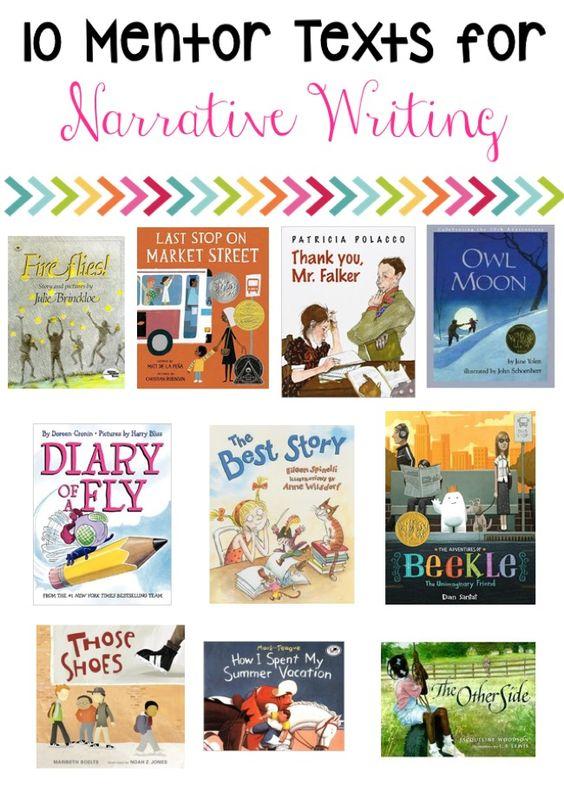As teachers, we’re always looking for ways to make our lessons more interactive and engaging. However, it can be challenging to find activities that are interesting and fun. You also want to deliver a lesson that keeps students focused on the task rather than what they’ll be eating for lunch or what they will do after school. That’s especially tricky when teaching a complex topic like personal narrative writing.
As you’ll probably already know, in personal narrative writing activities, students create an account of a specific life event using the first-person point of view. It’s a type of creative writing that can spark meaningful discussions among classmates and the teacher.
Anchor charts are great visual tools that help you and your students better understand concepts and ideas that are new or difficult to grasp. In addition, anchor charts help your students understand and retain information in the long term. They are easy to make and can be done in a few minutes.
Table of Contents
- Elements of a Good Personal Narrative Anchor Chart
- Introduce the elements of good personal narrative writing
- Different Ways of Presenting Personal Narrative Anchor Charts
- Teaching personal narrative – resources from Teach Simple
- Other personal narrative resources
Elements of a Good Personal Narrative Anchor Chart
For writing assignments like personal narrative writing, you can ask your students to create their own anchor charts that include key terms and concepts. Alternatively, you could get their creativity flowing by drawing up a chart of literary devices like metaphors, similes, personification, etc. You could include examples of each concept on your chart to help your students better understand the information – the more creative, the better!
Introduce the elements of good personal narrative writing
Personal narrative writing is more effective if students understand the essential elements of good writing. Some of the key elements you could illustrate in your chart are:
First, you need to include basic story elements that still apply to personal narratives. These include:
The sequence of events or plot
A plot is a plan for a narrative, including its beginning, middle, and end, characters, and setting. A plot functions as a roadmap for your narrative, showing readers where it is headed and what surprises lie ahead.
The setting
The setting of a story isn’t just about location; it also includes time period, weather, and mood. The setting is more than just a backdrop; it plays an integral part in the story. It may be set at any time or place as long as it is clearly defined. The setting establishes the story’s tone, mood, and characterization.
Developing well-rounded characters
Even though it is a personal narrative, the reader won’t necessarily know the author or their backstory. Good stories are driven by characters. Characters also serve as readers’ eyes, filtering the story’s events through their perspective. Besides shaping the plot, characters push the story forward.
A problem and a solution
A personal narrative, like any story, doesn’t necessarily have to be a harrowing tale about stopping an evil genius from taking over the world or solving a crime. Instead, it may be about an account of the student trying to convince their parents to get them a new bicycle or banding together with friends to outwit a bully. Anything can be a problem. A tangle between characters, a choice to be made, or a predicament to be overcome. It must, however, be solvable. If a problem is not solvable, it will not make a decent story.
Once you have reestablished these elements, you can start to introduce more specific details that will support a personal narrative
The narrative structure
Authors have to keep their narratives focused by not introducing too many characters or too many places the characters visit. You can create an anchor chart that lists the aspects of a good story. Students should consider where and when their memories or events occurred, create a precise sequence of events, including important details, and keep the narrative focused on the small moment.
Finding their voice
As a writer, you should use your voice to express your feelings, develop your characters, and express your ideas clearly and concisely.
Be concise
This is a crucial element of all types of writing, but it’s essential in personal narrative essays. Students shouldn’t try to write exhaustive biographies in 500 words. Instead, they should write just enough to give readers insight into their personalities and experiences without going overboard.
Authenticity
Students should try writing their narratives as if they’re speaking to readers in person. This will help them avoid sounding overly formal or self-conscious. An authentic, casual style does more to connect with readers than anything else.
Specificity
Personal narratives shouldn’t be a series of general observations about life. They should focus on a specific event or series of related events.
So, how would you illustrate these points on a chart? Here are a few ideas.
Different Ways of Presenting Personal Narrative Anchor Charts
There is no wrong or right way to put an anchor chart together. It’s meant to be a creative process that helps you simplify concepts, making them easy for your students to take in. So here’s a little inspiration to get the creativity flowing.
Introduce structure
Students will be expected to create narratives throughout their education. Break down narrative writing into personal and fictional versions. Writing personal narratives help students improve their fictional writing skills, as well!
Hints and tips
This chart leads your students through the process of writing a narrative essay. You can model the process by using this in your pre-planning and writing/answering each of these components. For example, start by writing down a small moment from your life, then write down a catchy lead, and so on.
Personal narrative checklist
Checklists are an excellent tool for making students feel self-reliant and confident to tackle the task.
Focus on small moments
How do you eat an elephant? One bite at a time!
Draw it out
Younger children find it easier to express a narrative through drawing, especially when their writing skills are just beginning to emerge.
Teaching personal narrative – resources from Teach Simple
A Student’s Guide to Writing a Personal Narrative
Whether you are teaching in-person or doing distance learning, this resource is perfect for teaching your students how to write narratives.



Bilingual narrative writing graphic organizer
These worksheets will help students brainstorm and develop ideas before composing their narrative writing piece. They are available in English and Spanish.



My November journal: creative writing prompts
This journal is the perfect way to get your students to write daily and feel comfortable about their experiences.



Writing a memoir
This unit provides teachers with a four or five-week that includes daily lessons to help students delve deeply into memoir reading and writing.



Other personal narrative resources
Display charts filled with tips, checklists and reminders
Have a selection of visual reminders and tips on display, so your students can refer to them whenever they need a confidence boost.
Keeping focused
Students can become better writers by learning and practising moment writing. For example, personal narratives typically turn into lists of events. Still, students can see how much more meaningful their writing becomes by focusing on the most important moment.
Personal narrative graphic organizers
Giving students a planning tool to organize their thoughts will do wonders for their writing process. In addition, they can be adapted to suit the grade level and expectations.
Complete units
Aren’t we lucky we live in a time where we can share resources and ideas. So many bundles and complete units are available to kick-start our creativity and save us some precious time.
Thought starters and prompts
There are many reasons why children may need thought starters or writing prompts. For some children, these can help to stimulate their creativity and get their ideas flowing. For other children, it may be a way to help them focus on a particular topic or theme. Whatever the reason, thought starters and writing prompts can be a helpful tool for children in the writing process.
Mentor texts
Students should be exposed to a good example or two before they start writing their own personal narratives. Choose a powerful, engaging personal narrative mentor text to inspire them.
Personal narratives are powerful tools for connecting with others. They can help students make sense of their experiences and gain confidence in writing and sharing their stories. But it can be challenging to teach them how. As a teacher, you want to help your students understand the information they are learning and retain it long after they have left your classroom. Anchor charts are great visual tools that help your students better understand the concept of a personal narrative and organize their ideas.

By Nicola K
Nicola lives in Johannesburg, South Africa. Before starting her career as a writer, she specialized in gifted education and now writes about education and supporting parents and teachers of children who are “different” according to commonly-held views.

